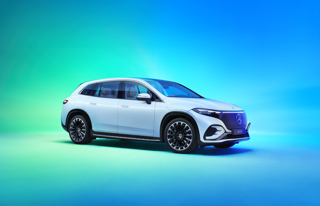By Professor Jim Saker, director of the Centre for Automotive Management at Loughborough University Business School
Companies spend millions on developing both their corporate and product brands and over time you see some rise and some fall in the perception of the public. At the back end of last year a number of notable companies, including Starbucks, Amazon and Google, were exposed as paying little or no corporation tax in the UK.
Despite the fact that what they were doing was perfectly legal, it led to a public reaction and, in the case of Starbucks, a consumer backlash and a drop in sales. It became apparent that these companies were going to have to do something to rectify the brand damage caused by the adverse publicity.
One of the interesting things within our sector is the relationship between the manufacturer and dealer branding. Most of the conventional thinking would suggest that the manufacturer brand is predominant and the amount of investment on a global scale would suggest that this is the case. Inevitably, when wishing to purchase a new car, a customer will be drawn to the manufacturer badge above the door of the dealership. Whether it is the sponsorship of the Champions League or the Australian Open Tennis you cannot move far without encountering the powerful imagery of the manufacturer brands.
The obvious aim is that potential customers will develop a liking and, potentially, a relationship with the brand. In most industries that is where the brand journey would finish.
Little research into fixed branding
There is, however, something quite interesting that occurs in our sector. With the franchise structure another brand comes into play in the form of the dealer brand which interacts alongside the manufacturer brand. The customer experiences not only the manufacturer brand, but also any branding adopted by the dealer or its group.
Very little research has been undertaken into the reaction of customers to this mixed branding scenario. Some recent manufacturer findings have suggested an odd quirk within our sector that does not conform to conventional branding theory.
The findings suggest the naming of the dealership is actually critical in the customer’s perception of the brand experience. Throughout the UK there are dealerships with different naming structures. Some carry a clear family or group name while others are named by geographical area. In the mind of the customer, a strange form of attribution theory starts to emerge.
If the dealership is named after an area (eg Manufacturer – Leicester) the credit or dissatisfaction is apportioned to the manufacturer. By contrast, if the dealer is prominently named with its own brand then the credit or dissatisfaction is apportioned to the dealer.
For example, a prominent multi franchise group in the East Midlands is Sandicliffe. If a customer receives good service from their Ford franchise the credit is not apportioned to Ford but to Sandicliffe.
Why does this matter? In discussions at the AM Hit for Six Conference last year a number of people advocated the Net Promoter Score approach as being a predictor of loyalty to a particular brand. This approach was first suggested in the Harvard Business Review in 2003 by
Fred Reicheld and there is evidence that using this measurement helps to predict revenue growth.
Dealership name is key
Interestingly, it does not necessarily predict customer loyalty within our sector. If you look at the process from the basis of someone’s potential to recommend, much will depend on what the dealership is called.
If the name above the door features the manufacturer then the manufacturer brand is promoted, however if the dealer name is foremost, the recommendation will be the dealer or its group.
On one hand this gives massive potential for groups to sell across their franchises. By having high Net Promoter Scores the dealer has the potential to pick up customers who wish to buy a Fiat having been recommended to the dealership by someone who originally bought a Ford.
From the manufacturer perspective the investment in brand development may be dissipated at the dealership level.
The problem is that despite having had a franchise system for more than a hundred years we have little understanding of the concept or impact of dual branding. There are very few other sectors that face this issue. The one thing that is certain is that brands matter and they need protecting. The question is how?


















iceage - 26/03/2013 17:26
Unsurprisingly Dr Jim's artical only looks from one end of the telescope. Over the years some Manufacturers product design/quality problems and lack of will to resolve them have caused major damage to previously successful local dealers....... Thinking Renault, Citroen, Vauxhall etc. Anyone want to add to this list? :-)